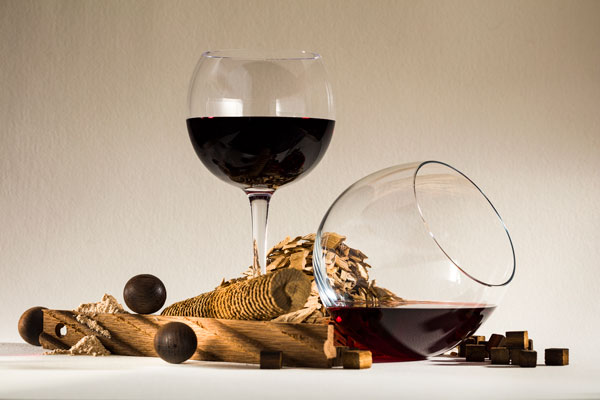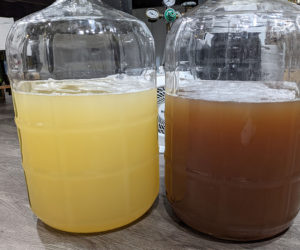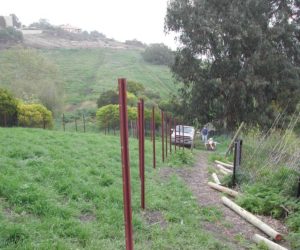Oak has been part of winemaking for over a thousand years. As ancient clay amphorae gave way to wooden barrels in Roman Europe, wine producers discovered that oak barrels were not only sturdy, reliable containers for shipping and storage, but that oak barrels often improved the wine as well. With oak barrels, the winemaker gets two kinds of improvement. The wood itself adds aromas, flavors, and mouthfeel that people find appealing.
Meanwhile the physical structure of the barrel allows the slow ingress of air to gently oxidize the aging wine. Although the microoxidation is not included, oak alternatives bring many of the other oak benefits at lower cost and greater convenience than a barrel.
Since its use as a bulk container is how we got to oak, we will start there. Oak was not the first wood used for wine containers. Ancient records indicate that palm-wood barrels were in use for transporting wine in Mesopotamia. Palm wood never replaced clay amphorae, though, and the latter were still in use in Europe as oak barrels began to supplant them. In a remarkably fast technological development for the time, it appears that oak barrels completely replaced amphorae within about 200 years.

Today, all oak barrels are made from just a few species of white oak. Quercus robur and Q. patraea are grown in Europe and Q. alba is grown in North America. Red oak is too porous to make sound containers. Cherrywood and chestnut are sometimes used to make vinegar barrels but are very rarely used in wine production. American oak has thicker annual growth rings than European oak and can be sawn into staves to make barrels. French oak must be split to make a leak-tight barrel, yielding fewer staves per tree. An American oak tree can be used to make about four barrels, a French oak tree only two.
Oak Chemistry
With only part of the oak wood going into barrels, there is plenty left for other products. The larger of these oak pieces include staves, spirals, and sticks. Smaller oak can go into making cubes, beans, chips, sawdust, and oak extracts. About 40 to 45% of oak’s dry weight is cellulose, a long-chain polysaccharide that is a major structural material in green plants. The next largest portion, hemicellulose, is made up of mixed polymers of various sugars and makes up about 25 to 30% of oak’s weight. Its molecules provide cross-linking support to the cellulose structure. There are also oak tannins — polyphenolic compounds — that are extractable into wine. These are mostly odorless and have little flavor beyond bitterness and they contribute noticeable astringency to wine.
With only part of the oak wood going into barrels, there is plenty left for other products.
Lignin, another oak component, is a polymer of complex alcohols. It contributes aromas and flavors that result from its degradation products. Such products develop when oak wood is toasted at high heat. Lignin also degrades on exposure to alcohol. Of the aldehyde derivatives produced, the most familiar is vanillin, the dominant aroma of natural vanilla. Another is syringaldehyde that imparts woody aromas of smoke and embers. Coniferyl aldehyde expresses aromas like sweet graham crackers and toasted grains. Eugenol is an allyl benzene compound that shows spicy, clove-like aromas that sometimes extend to bacon and smoke. (Eugenol may also enter wine through Brettanomyces spoilage.) Lactones extract into wine as aromas of wood, coconut, and the notes wine tasters term “oaky.”
Tannins are very important to the mouthfeel of oak-aged wines. These compounds are from the same class of products that first found use in the tanning of hides. The process of making animal skins less soluble shows up in the astringent “drying” effect you feel on your palate from a highly tannic wine. Tannins in wine come from grapes, barrels, and other oak products.
Oak Alternative Types
The largest non-barrel oak pieces are staves and spirals. Staves often resemble those used in the construction of barrels. For use in tanks of wine, staves are about 39-in. long by 4-in. wide and 5⁄16-in. thick (100 x 10 x 0.8 cm). Like barrel staves, these are sawn from oak wood parallel to the original tree trunk. As a result, they present mostly side grain to the wine, with only the small ends exposing end grain. A barrel presents almost entirely side grain to the wine. Side grain is slower to release oak components to the wine than end grain. Some users of oak alternatives consider the side-grain extract — like that inside a barrel — to be milder and more mellow than end grain extract. If you have a tank that can accommodate these larger staves, they should produce the most barrel-like extraction. Tank staves are usually used for bulk-aging finished wine.
Staves are available in different woods and with different toast levels. French oak and American oak are most common although some other European oak products are available. American oak is usually considered fruitier than French and often expresses notes of coconut. Light toast levels deliver aromas and flavors typical of wood itself, while darker toasts reflect the burnt notes of smoke and char. With relatively slow extraction, tank staves have recommended wine contact periods ranging from three months to two years. One stave of this size for every eight gallons (30 L) of wine will present the same wood exposure as using 100% new full-size oak barrels.
Standard tank staves will not fit through the bunghole of a barrel that needs an oak boost or refreshment. This is where spirals may come in. These round sticks of oak are grooved with a spiral cut extending along the full length. The spiral cut exposes much more end grain surface than with a stave and results in a much faster infusion rate. The largest spirals, as much as 4 ft. (1.2 m) in length, are used in tanks like tank staves. Each of these is described as able to contribute oak extractives at the same rate as 100% barrel aging to about the same volume, 60 gal. or 225 L. Six weeks is considered long enough for full extraction with spirals, as compared with months for barrels or tank staves.
Smaller spirals are produced for use in barrels, where 9-in. (23-cm) segments are secured in plastic mesh sleeves so they may be easily retrieved from the barrel after use. Smaller still are carboy spirals, usually about 8-in. (20-cm) long. All sharing the same geometry, the same factors of rapid extraction and high extract levels apply. If you use spirals, taste your wine periodically to avoid over-oaking.
There is no standardized definition, but I consider smaller sticks of oak to be just that: Sticks rather than staves. They come in several shapes, sometimes with a square cross section, sometimes grooved lengthwise, and sometimes with diagonal ridges on the stick. Those with more exposed end grain will likely extract faster than simple flat sticks with mostly side grain. While they may be used in barrels or tanks, most sticks are intended for carboys. Commonly, one or two sticks will be recommended for a 5- to 6-gal. (19- to 23-L) carboy of wine. Three to six weeks is usually enough extraction time. Different woods and toasts are available.
When we consider still smaller oak pieces, they may be used in ways beyond aging wine. Cubes, beans, chips, or sawdust may be added to primary fermentation to provide “sacrificial tannins” to help stabilize color. If a wine has already been aged in barrel or with staves but still needs more oak, the rapid extraction of the smaller pieces may be employed for a final boost.
Oak cubes, by their geometry of two end cut faces and four side cut, provide 1⁄3 end grain and 2⁄3 side grain. They extract much faster than staves and somewhat faster than most sticks. A common use rate is about 2 oz. (57 g) in a carboy and up to a pound (454 g) in a barrel. You can drop them in directly or put them in a mesh bag. Three weeks or so is probably enough for full extraction. I have left them in longer (until my next racking) without any negative effects. If you put them in loose, just invert the carboy or barrel and wash them out. Oak beans are similar sized pieces of oak, but less regularly cut than cubes. They may be applied in the same manner at the same dose rates, and they extract similarly fast.
Oak chips and sawdust are smaller still and inherently expose lots of end grain. Chips may be added loose or confined to a mesh bag. Sawdust is added loose, usually during primary fermentation for color stabilization, and exit as part of the pomace upon pressing. Chips may be used the same way or may be used in aging or for a final finish. The use rates are about the same as cubes and extraction is even faster. While inexpensive and efficient, chips are sometimes criticized as being simple and lacking aromatic complexity. Some experienced wine judges assert that they can taste when a commercial wine has been oaked with chips.
There are a few more products to consider that are so specific I refer you to the product labels for use advice. Because they are proprietary, their use resists generalized instructions. One of these is liquid oak extract, usually an ethanol extract of toasted oak chips. Since extraction rates vary, check the container volume against your needs before buying. The product looks and smells like a very oaky whiskey and works instantly upon addition to wine. While I rarely use this in producing my wines, using barrels or other oak products instead, I keep a bottle on hand all the time. That is because I can add just one or two drops to a glass of wine and determine if the wine will be better with an oak addition.
There are also powdered tannin products that are derived from oak. The supplier may specify these for mid-term aging or for final oak adjustment. Additions are usually in grams per carboy and results are between immediate and a few weeks prior to bottling. So if you are not using barrels, or your old barrel has gone neutral, don’t give up on oaking your wine. There’s a whole world of high-quality products out there to make just the wine you are aiming for.






